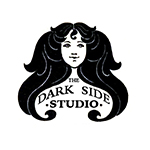Timbre in Music
Timbre (pronounced TAM-ber) is the unique quality of sound that an instrument or voice has - the character, texture and colour of a sound. It is how one can tell the difference between a piano and a trumpet playing the same pitch, as well as one of the ways we can describe the difference between Bob Dylan’s voice (nasal and scratchy) and Cher’s voice (full and rich). Each instrument or voice has a different timbre, and the same instrument or voice can be played or used differently to create different timbres.
The timbre also includes the way the sound changes over time (the sound envelope or ADSR envelope which stands for Attack, Decay, Sustain, Release). For example, percussion instruments make most of their sound right at the start of a note, and then the sound quickly fades away. This is called attack and fade. Sustained instruments like a flute, horn, or violin start making a sound and keep making it, allowing them to create smoother, more fluid music. So the timbre of a percussive instrument is tends to be sharp and bright, as opposed to a violin which is often more soft and warm (depending, of course, on how it’s played!)
Timbre can also be called tone colour, tone quality or voice (regardless of whether or not the sound is from a person).
Timbre is a category for the features of sound that are not pitch, loudness, duration or spatial location.
Remember that describing timbre using emotional terms (excited, happy, sad etc) is a description of the interpretation or the effect of the sound, as opposed to describing the quality of the sound itself.
